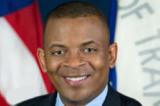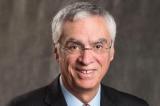January 16, 2018
America has an infrastructure deficit, a gap between what the nation spends on roads, bridges, airports, waterways, and other public works and what it should spend. The American Society of Civil Engineers pegs this gap at $2 trillion over the next decade, although there is uncertainty about these estimates.
The overall highway and transit system appears to be improving, but in some places, President Trump is right: our infrastructure is crumbling. We've all seen examples—in Flint, Michigan’s water crisis, Puerto Rico’s disinvestment in infrastructure and struggle to recover from Hurricane Maria, and even the DC region’s Metro system. Policymakers have proposed many ways to address the issue, and President Trump is expected to make infrastructure a major legislative priority in 2018.
But fixing our infrastructure requires more than money. It requires countless decisions by the federal government and the thousands of state and local governments on how to spend that money. These decisions will have far reaching and important consequences for budgets, as investments commit resources to new or existing projects that must then be implemented and maintained.
Beyond financial impacts, projects affect people and communities in tangible ways. Infrastructure projects can increase employment and boost economic growth, but decisions on what roads, bridges, water pipes, internet grids, or other assets to build or tear down can also shape the lives of individuals and families.
Projects built today could last a century. Roads, bridges, and sidewalks across America still bear the imprint of the Works Progress Administration from the 1930s. Decisions made now could enable or prevent successful responses to changing technology, evolving natural and environmental risks, and other forces.
Our choices about infrastructure investments will have lasting impact. We must get them right.
To help inform such decisions, the Urban Institute is releasing “Using Dollars with Sense: Ideas for Better Infrastructure Choices,” a series of essays focused on the factors decision makers should keep in mind as they choose between projects and the tools they have to incorporate these criteria. Urban Institute visiting fellow Shoshana Lew argues for one such tool in her new paper, calling attention to the potential of asset management to expand the use of life cycle cost analysis, risk management, and long-term planning and to do so in a way that integrates various costs and benefits into project planning: environmental risks; access to jobs, education, and healthcare; and integration of new technology with existing infrastructure.
But various perspectives and policy levers exist. Over the next few weeks, we will publish essays from several experts on what these tools are and how they should be used to create an infrastructure system that is economically responsible, creates opportunity, and prepares us for the future. We don’t expect all the authors to agree, but by surfacing the possibilities, we hope to create a new resource for policymakers and infrastructure leaders to draw on as they make decisions that will reverberate for decades.
We are pleased to begin the incubator with contributions from former secretary of transportation Anthony Foxx, Kristina Swallow and Greg DiLoreto of the American Society of Civil Engineers, and Phillip A. Washington, CEO, Los Angeles County Metropolitan Transportation Authority.
We will publish contributions from additional experts in the coming weeks:
Angela Glover Blackwell, CEO, PolicyLink, and Anita Cozart, Senior Director, PolicyLink
Carlos Braceras, Director, Utah Department of Transportation
Paul Brubaker, President and CEO, Alliance for Transportation innovation
Janet Kavinoky, Vice President, Federal and State Governmental Relations, Vulcan Materials Company, and Emil Frankel, Senior Fellow, Eno Center for Transportation
Robert Perciasepe, President, Center for Climate and Energy Solutions
Jodie Misiak, Principal, Strategic Initiatives in Alternative Delivery, Advisory Services, WSP USA, and John Porcari, President, US Advisory Services, WSP USA
Monique Rollins, Former Acting Assistant Secretary, Financial Markets, US Department of the Treasury
Robert Puentes, President and CEO, Eno Center for Transportation














